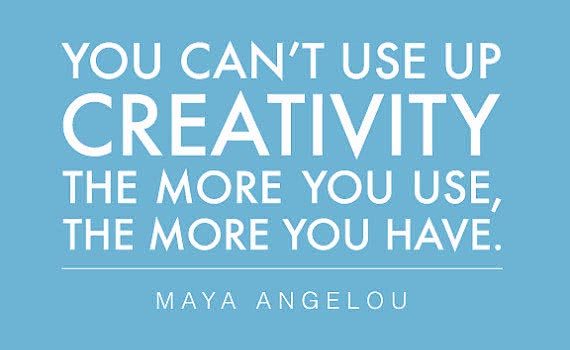Success Advice
10 Ways to Cultivate a Creative Mind
More often than not, success is synonymous with creativity. Thomas Edison is known as successful because he created the lightbulb. Richard Branson’s mega success came from his unique creations and branding of the Virgin company. Jony Ive, who has repeatedly been described as the creative genius behind Apple’s greatest products is indeed notorious due to his creativity. The list goes on and on with the numerous creative minds behind successful products.
If success comes with being creative, the crucial question then, is what does it take to possess a creative mind?
Creativity has been defined by neuroscientists as the ability to take disparate or scattered ideas and bring them together in new and useful combinations. Not surprisingly, the creative process of the mind is similar in bringing together different parts of your brain. Thankfully, much of the research in modern neuroscience has demonstrated that mental capabilities such as creativity are a result of a person’s own intentional activation of different parts of the brain. It is something that can be harnessed through practice, cultivation, and development.
Here are ten ways to spark off your creative mind!
1. The cloud exercise
You probably had to do this when you were a child, but do not let the simpleness of this cause you to think that it is not effective!
Clouds are notorious for resembling something else. Take a look up at a few different cloud formations and note what some of the shapes resemble. A tree? A Cat?
2. Increase your vocabulary
Most online dictionaries will always have a “word of the day” already featured. No need to try and chew up a ton of words in one go, just add one word a day to your vocabulary. Most importantly, find a way to use it during a conversation- that even makes it challenging and fun.
3. Pick any object and describe it ten different ways
What is in front of you right now? Most likely your laptop or computer. How many different ways can you describe it? Shiny…sleek…modern…silver…try and come up with ten adjectives for it.
4. Pick up a pencil and draw
Studies have shown that drawing activates certain parts of your right brain. You do not need to be the next Da Vinci to reap the creative benefits of trying to draw something you see. Just take a look out the window, or try and draw the coffee mug in front of you.

5. Do something with your non-dominant hand
Doing something unfamiliar will give your brain a kick in the pants and fire off neurons that will support your overall creativity. Whether it is brushing your teeth, combing your hair, or writing your name on a piece of paper, try it with your less dominant hand.
6. Learn a few phrases in a different language
Always wanted to throw out a couple of romantic French or Italian phrases? Learning a language activates the left temporal lobe of your brain. You will not only be able to impress someone with your bilingual talents but also do your creative brain a favor! Pick up a little phrase book from a used book store for a couple of dollars.
7. Play devil’s advocate to yourself
Come at a conversation or discussion from a different angle. Argue with yourself and force your brain to wrestle with a different side. Stretch your mind into having to reason through a different perspective.
8. Experiment
Try something new. If you are a foodie, step out and try a different ingredient or a style of cooking you have never had. If you are into concerts and music, try listening to something different. Uncharted waters gets the brain to lay some new creative networks. Ask yourself, “when was the last time you did something for the first time?”
9. Learn a musical instrument
Most songs are a repetition or variation of four simple chords which are easy to learn on a guitar or a piano. Music is immensely powerful tool in activating creative parts of your brain as it stimulates multiple areas of your brain.
10. Find a different use for an item
A pillow could be used as a chair cushion- you do not have to actually go ahead and use it, unless you really want to, but come up with alternative uses for items in your possession. An empty jar of strawberry jam could be used as a drinking glass.
All these exercises are designed to activate dormant parts of your brain and cause different portions to work together in ways that they usually would not. This unique cooperation of different portions of the brain will create the perfect environment for your mind to be at its creative best.
Did You Know
How Skilled Migrants Are Building Successful Careers After Moving Countries
Behind every successful skilled migrant career is a mix of resilience, strategy, and navigating systems built for locals.

Moving to a new country for work is exciting, but it can also be unnerving. Skilled migrants leave behind familiar systems, networks, and support to pursue better job opportunities and a better future for their families. (more…)
Life
10 Research-Backed Steps to Create Real Change This New Year
This New Year could finally be the one where you break old patterns and create real, lasting change.

Every New Year, we make plans and set goals, but often repeat old patterns. (more…)
Change Your Mindset
The Silent Skill That Makes People Respect You Instantly
What truly earns respect and why most people go about it the wrong way

Everybody craves respect but not everyone earns it. Some people believe that a title, years of experience, or a position of authority automatically entitles them to respect. (more…)
Entrepreneurs
The Essential Skills Every Entrepreneur Needs In 2026
Success in the digital age isn’t about luck. It’s about mastering the skills that separate dreamers from doers.

When I was 22 years old, I started my first side hustle as a ghostwriter. (more…)
-

 Entrepreneurs4 weeks ago
Entrepreneurs4 weeks agoThe Essential Skills Every Entrepreneur Needs In 2026
-

 Change Your Mindset3 weeks ago
Change Your Mindset3 weeks agoHow to Turn Your Mind Into Your Greatest Asset (Instead of Your Enemy)
-

 Change Your Mindset3 weeks ago
Change Your Mindset3 weeks agoThe Silent Skill That Makes People Respect You Instantly
-

 Life2 weeks ago
Life2 weeks ago10 Research-Backed Steps to Create Real Change This New Year
-

 Tech2 weeks ago
Tech2 weeks agoWhat’s in a Name? How to Get Your Domain Right
-

 Did You Know2 weeks ago
Did You Know2 weeks agoHow Skilled Migrants Are Building Successful Careers After Moving Countries

























13 Comments